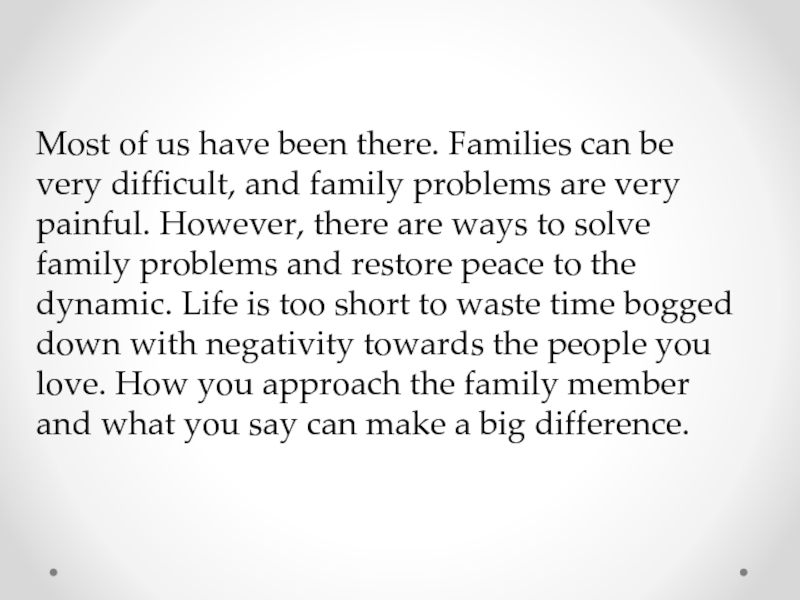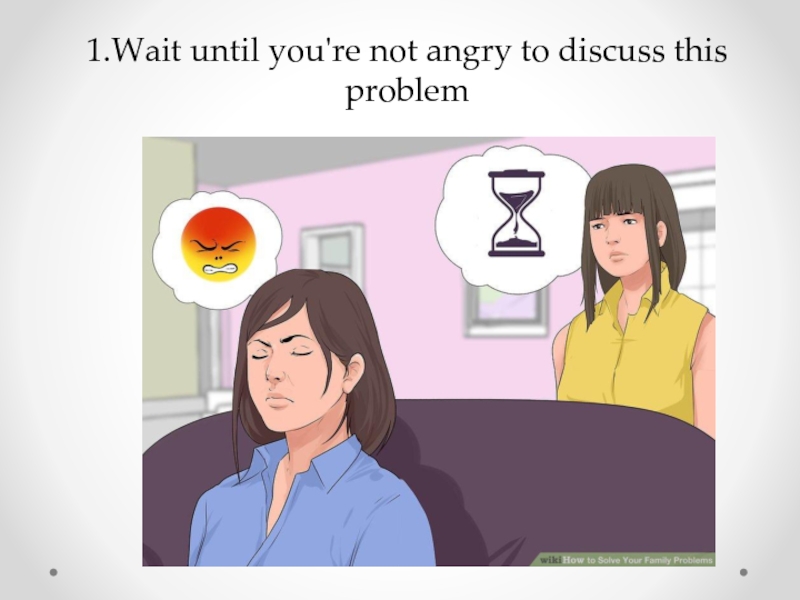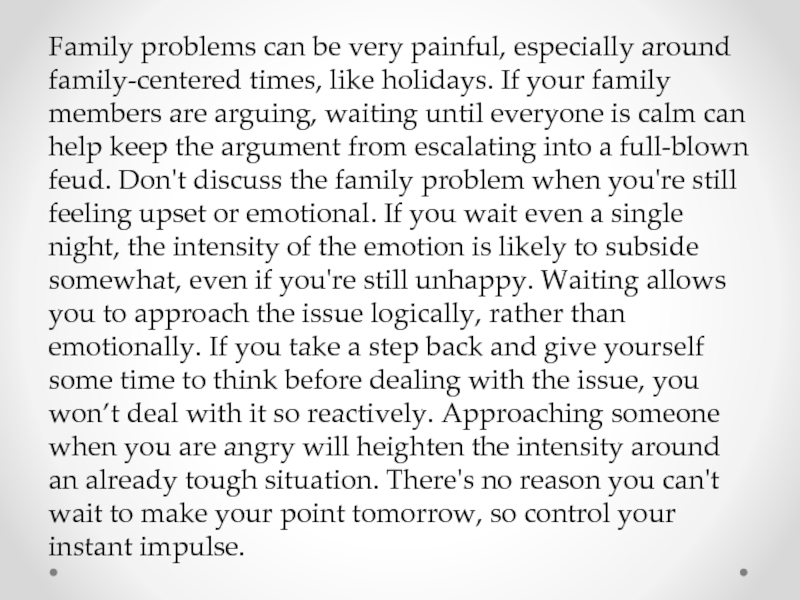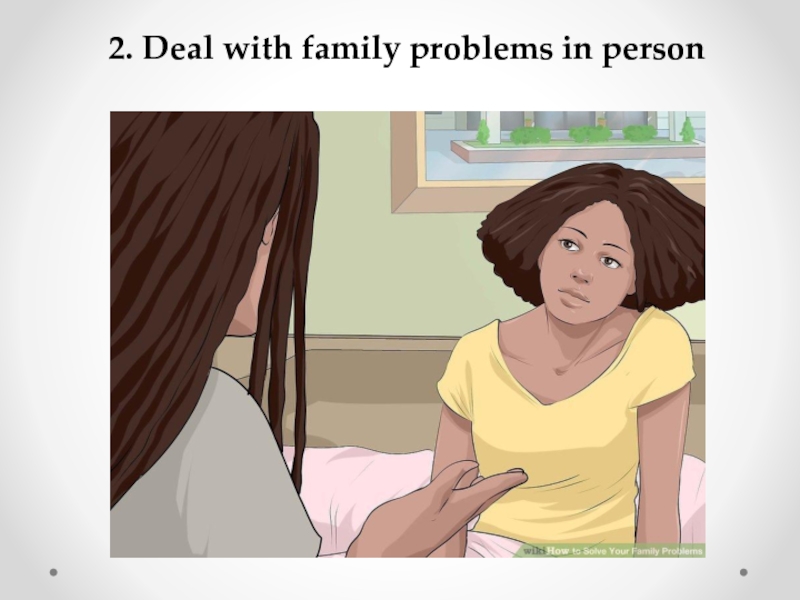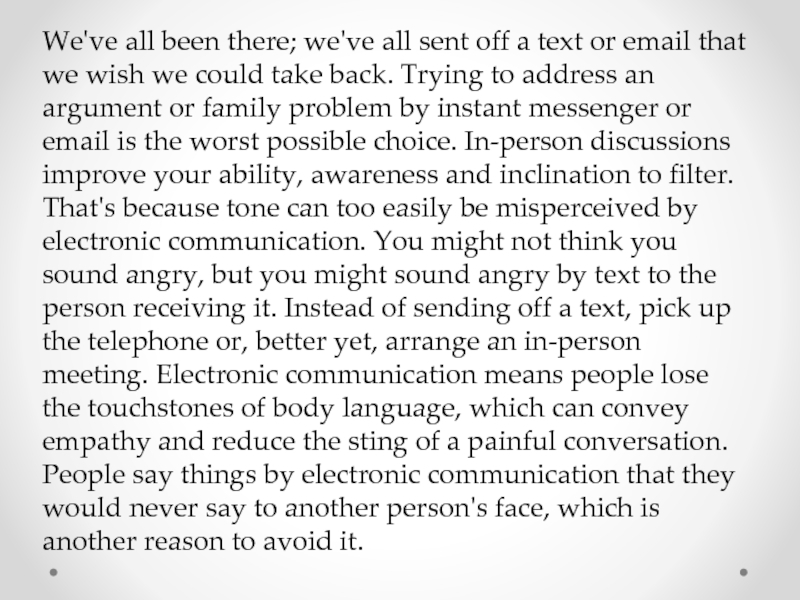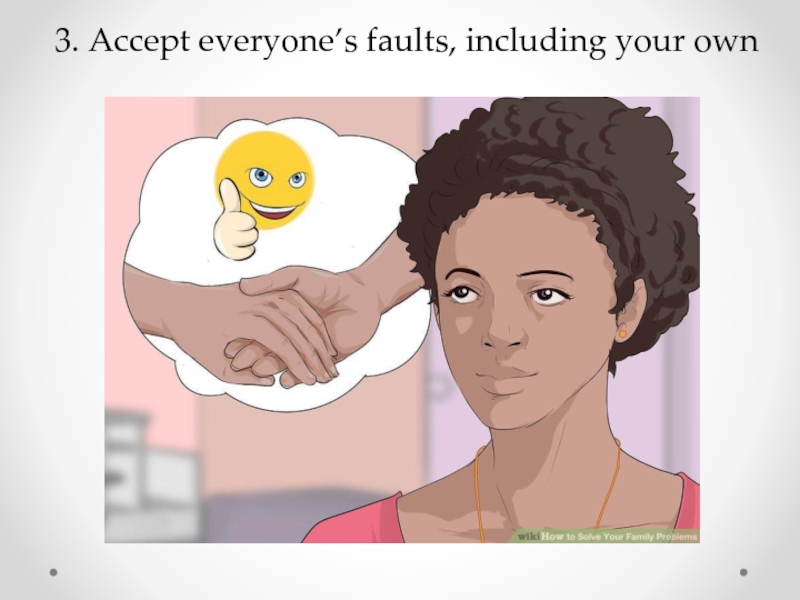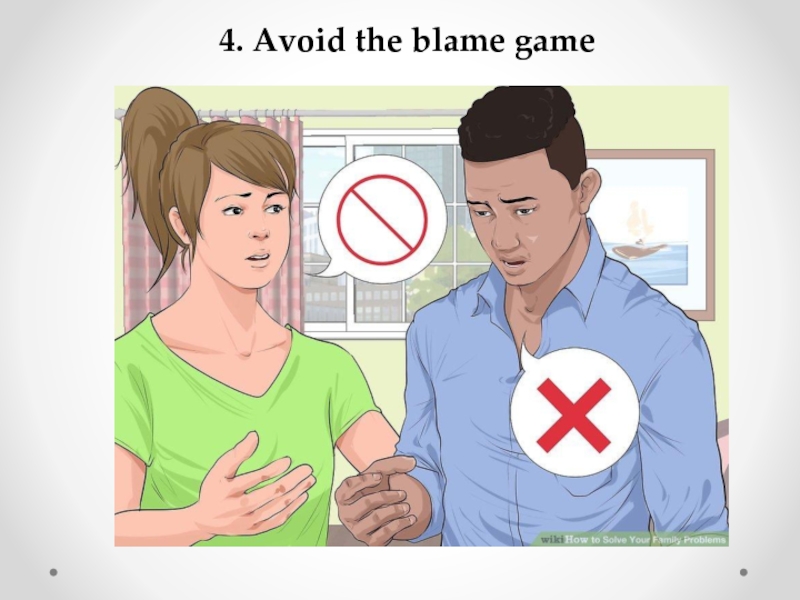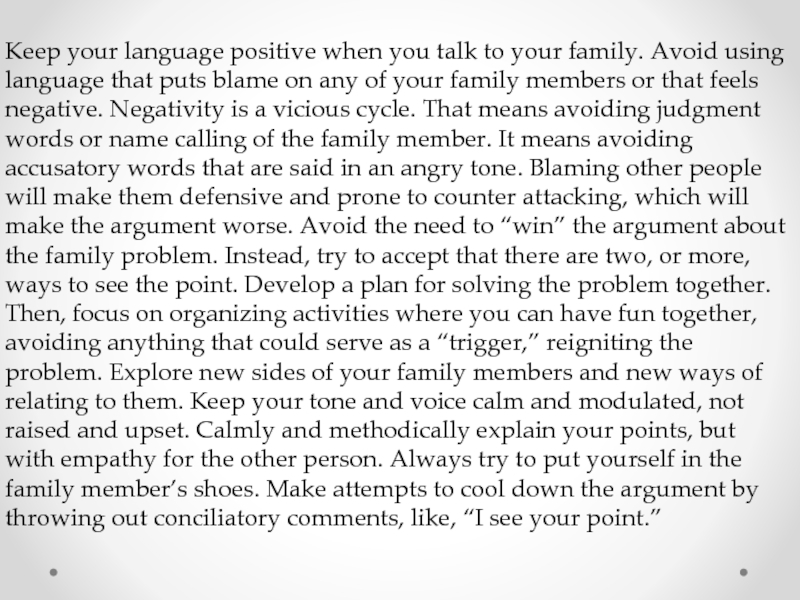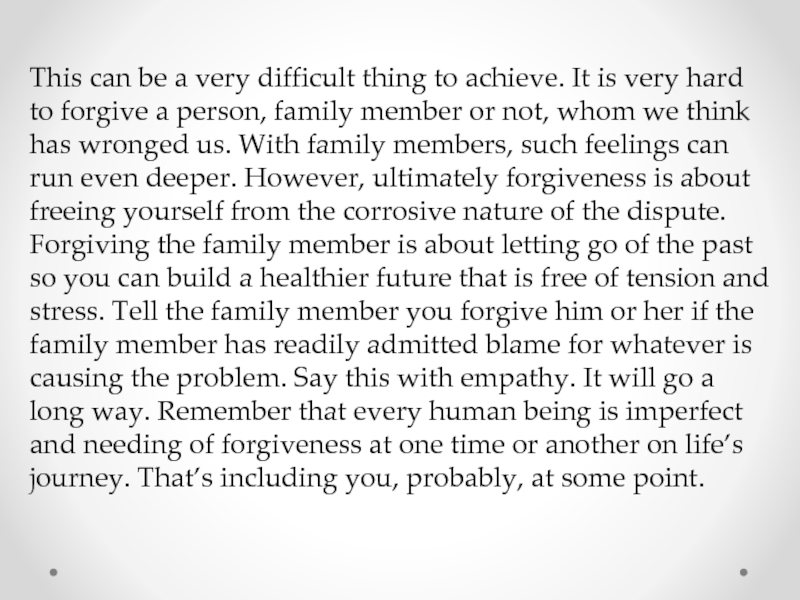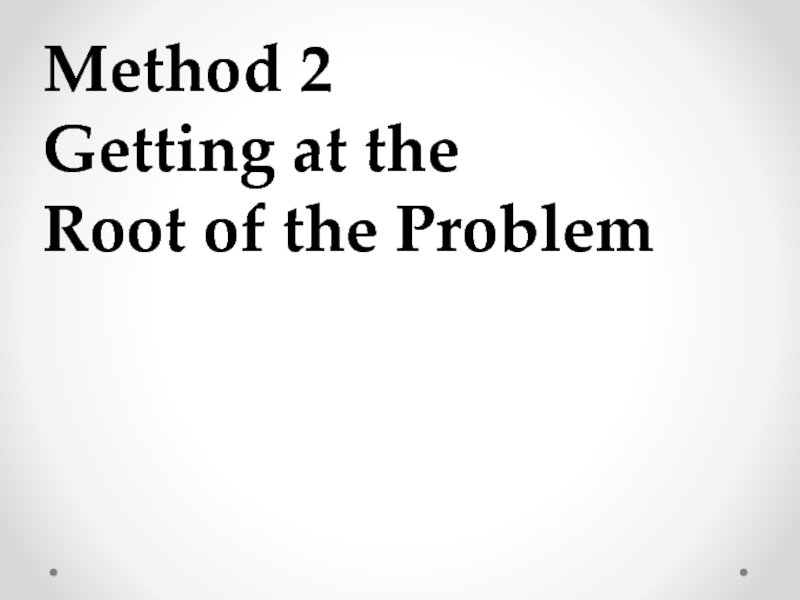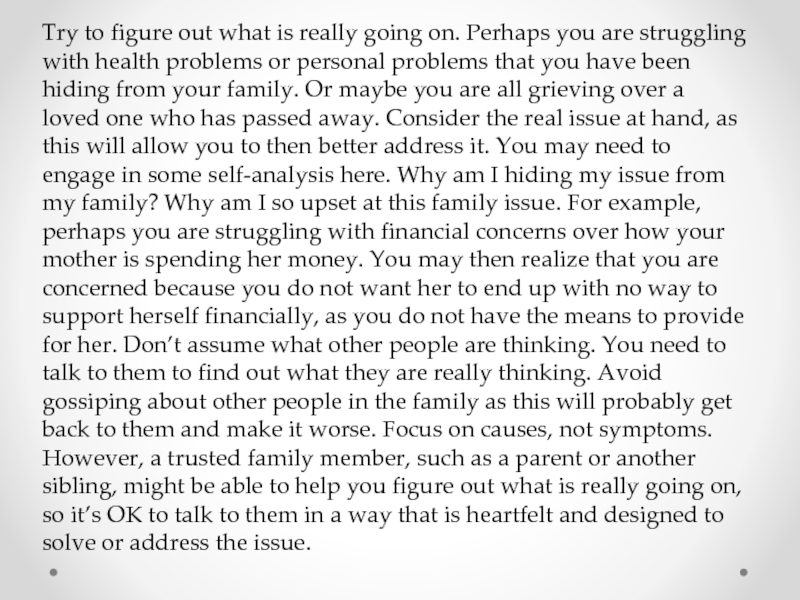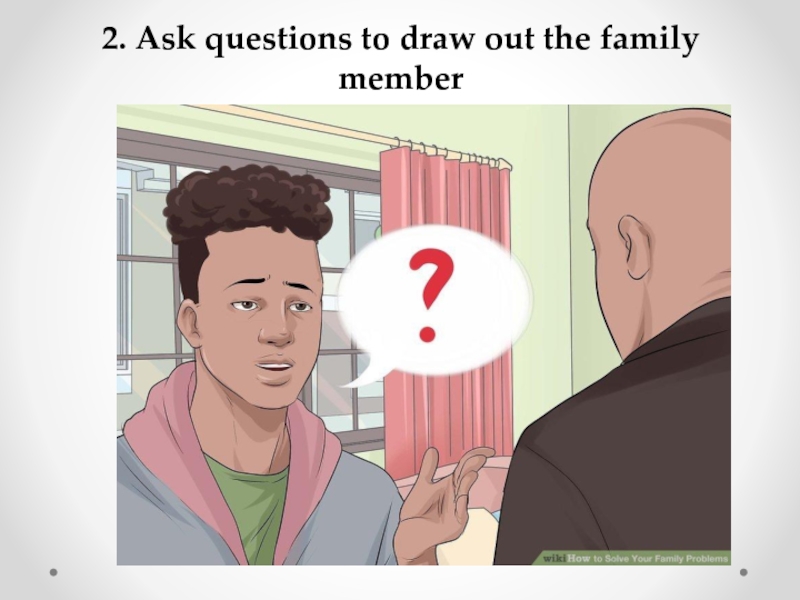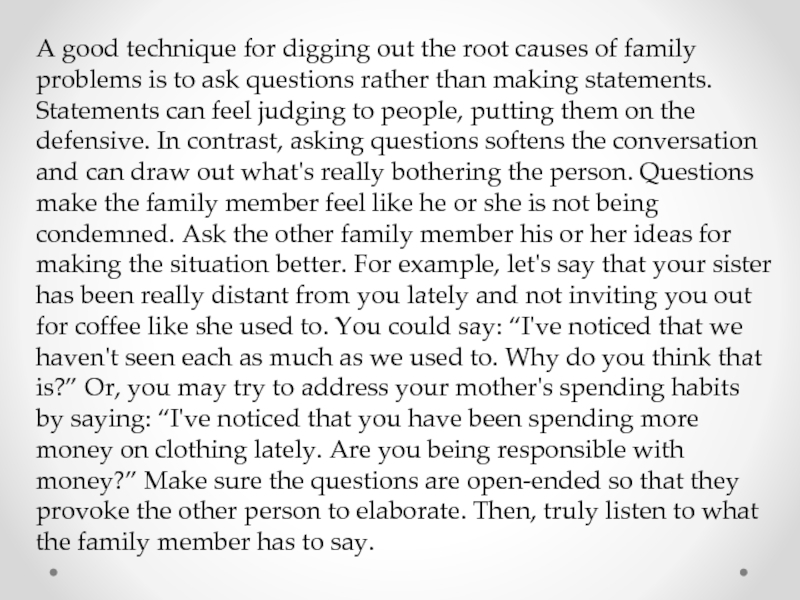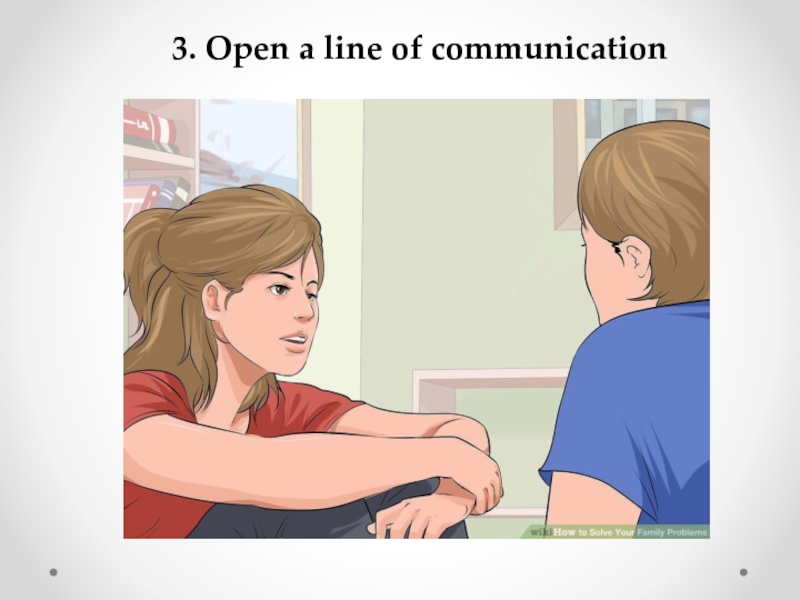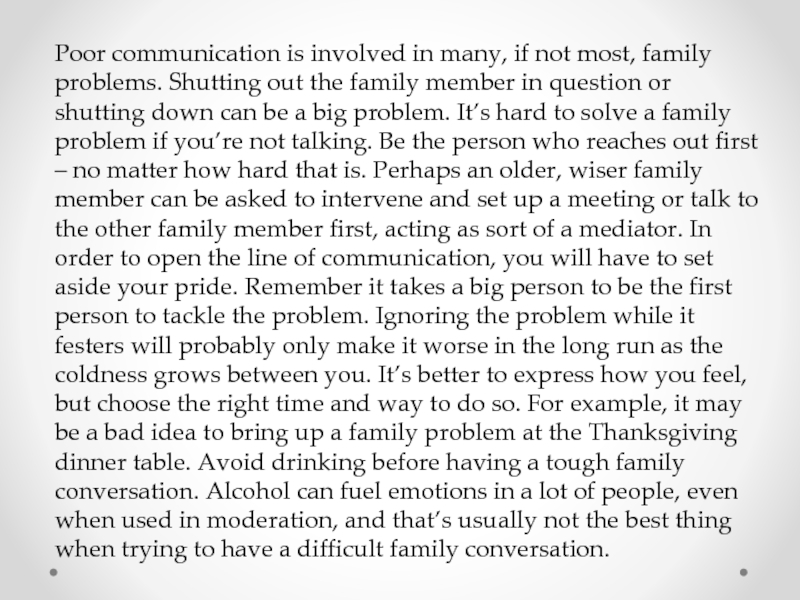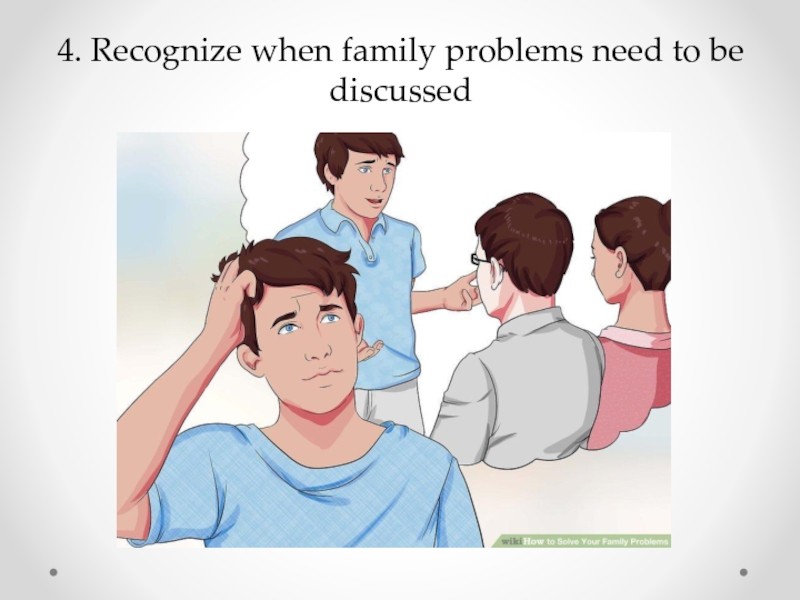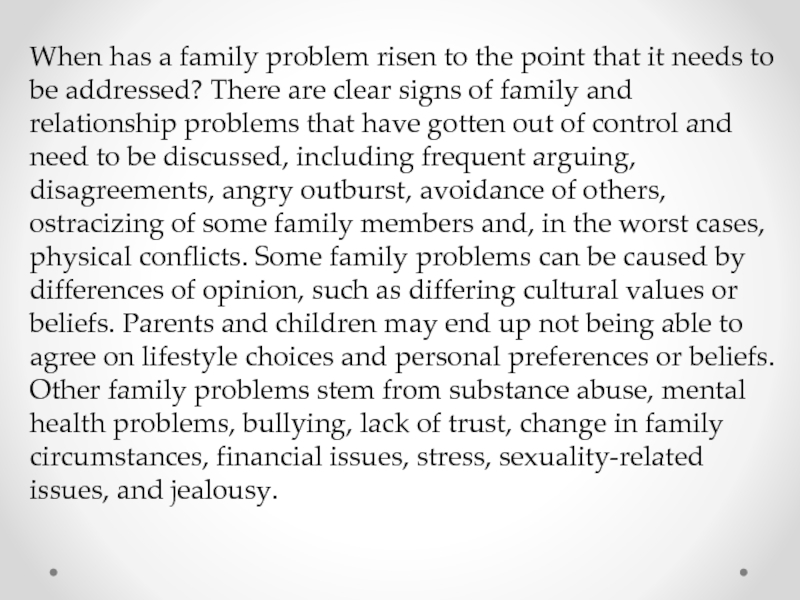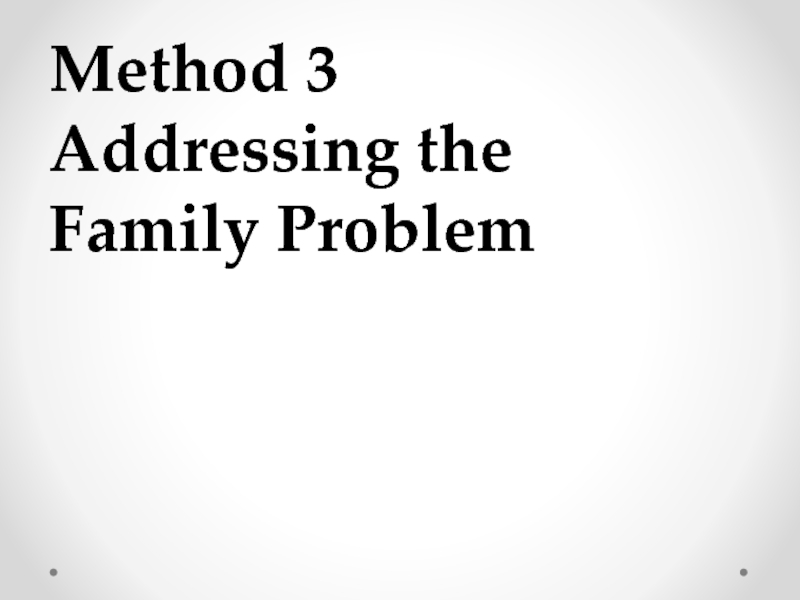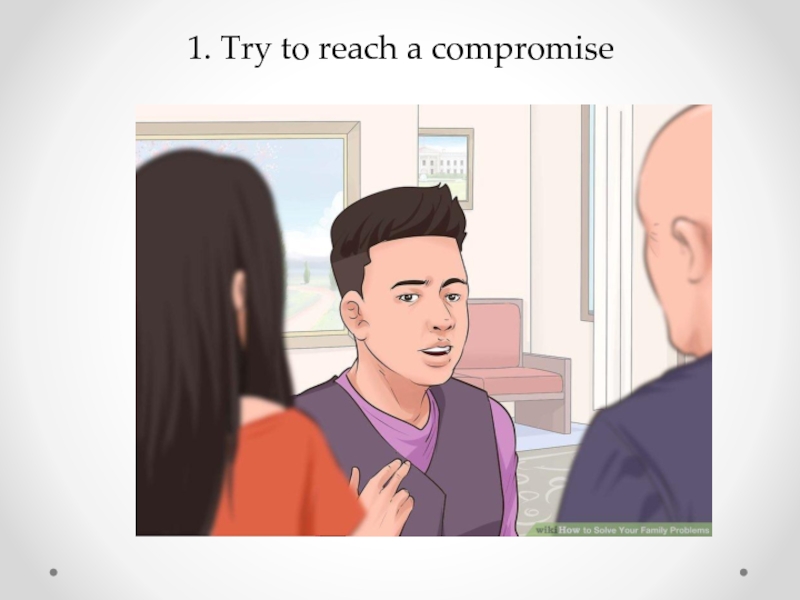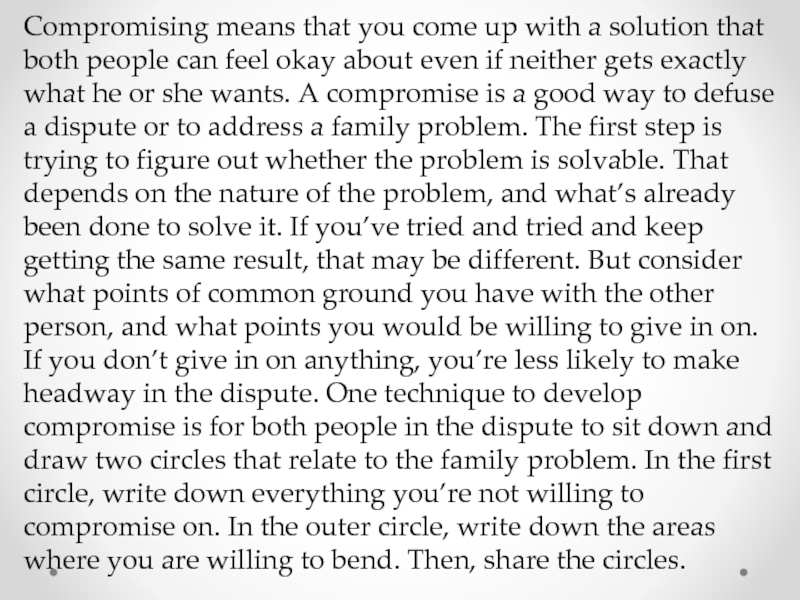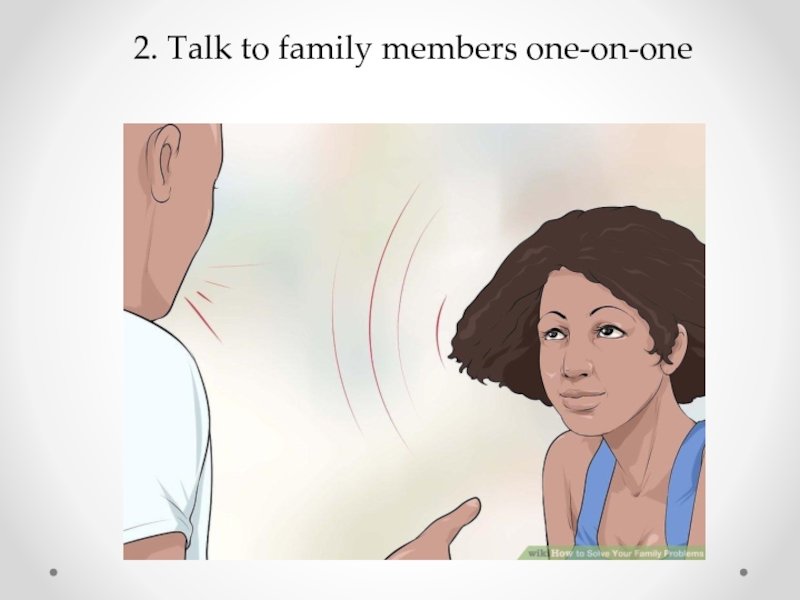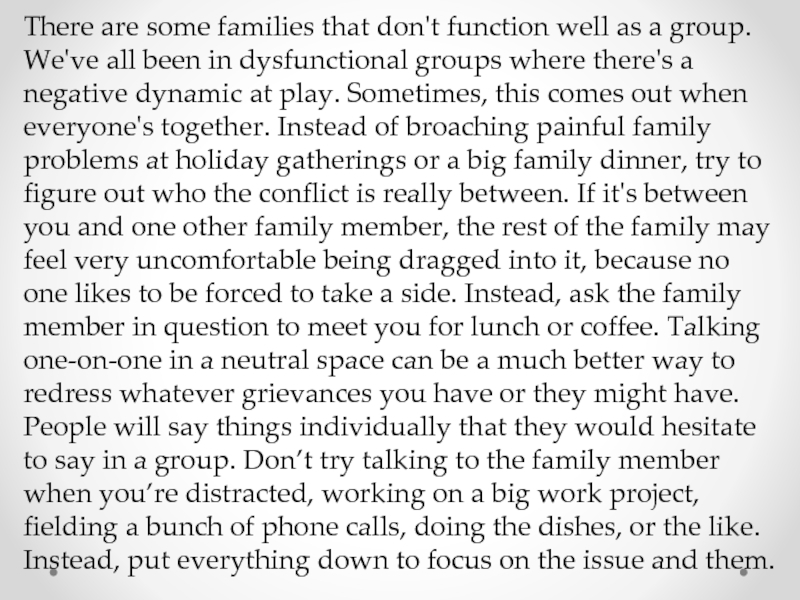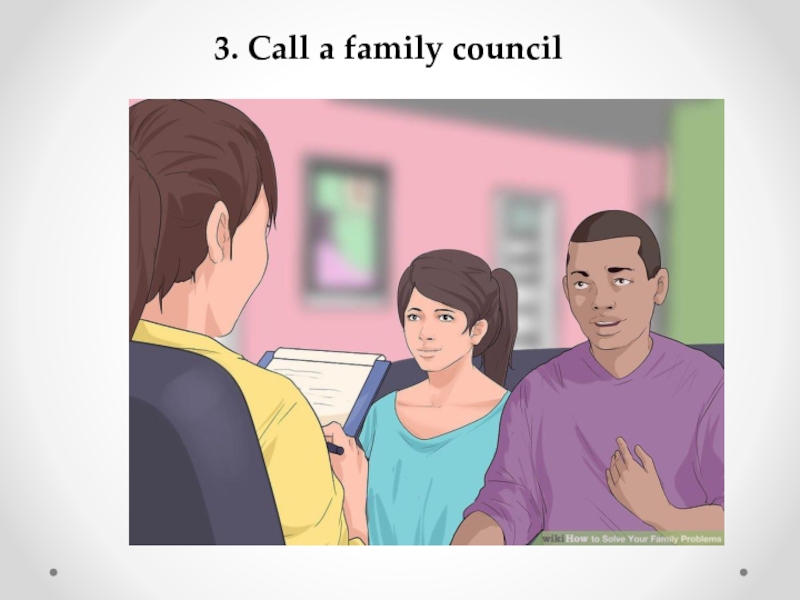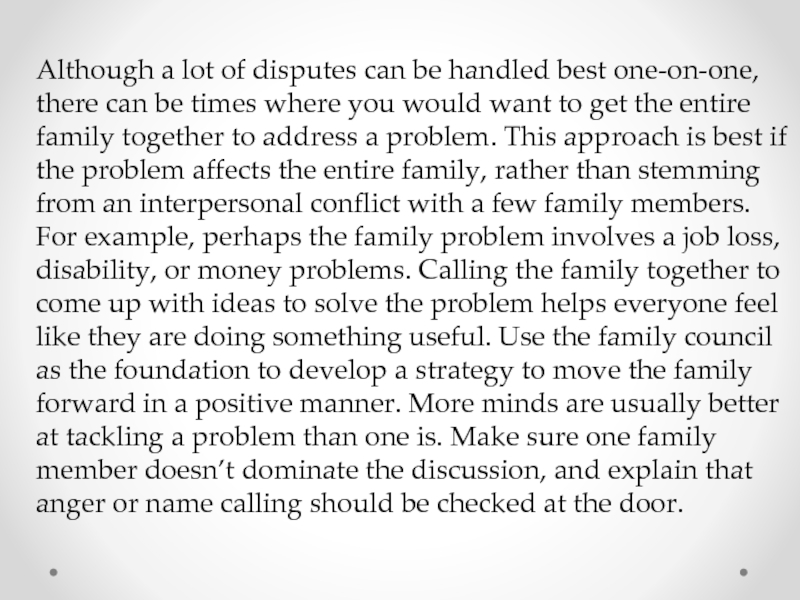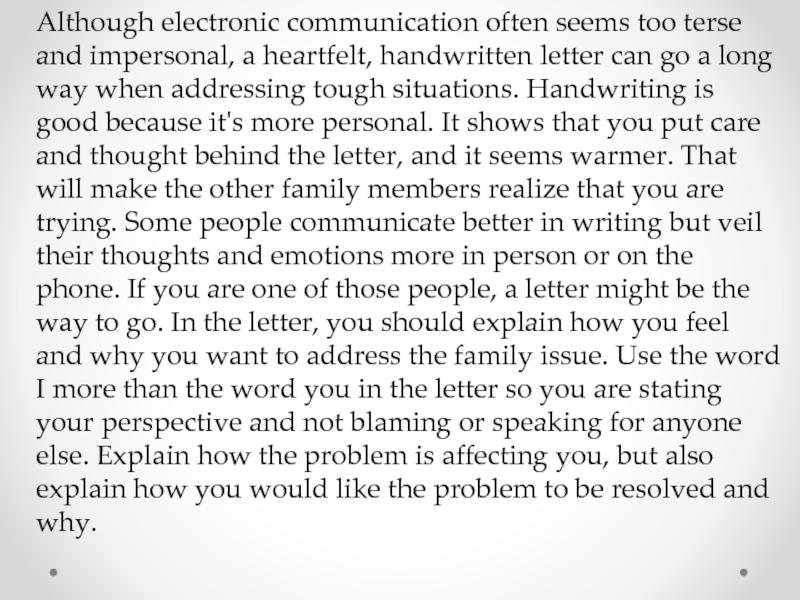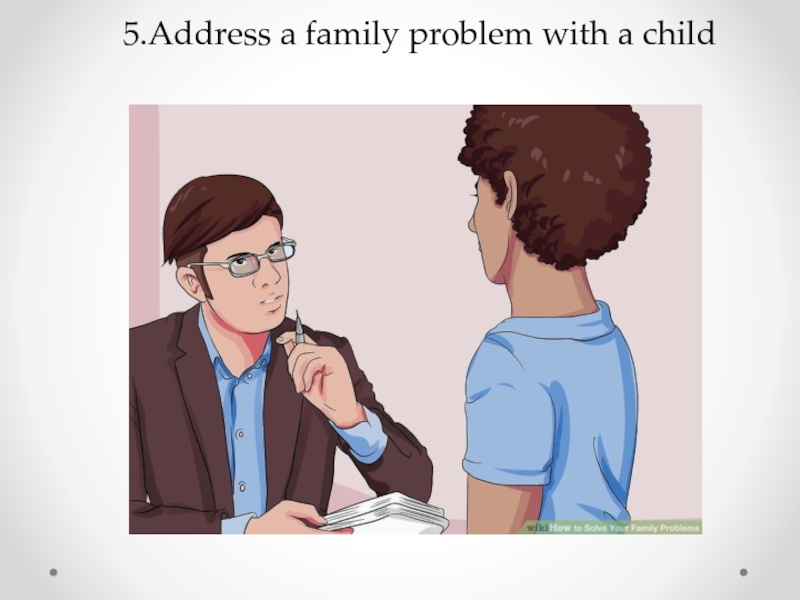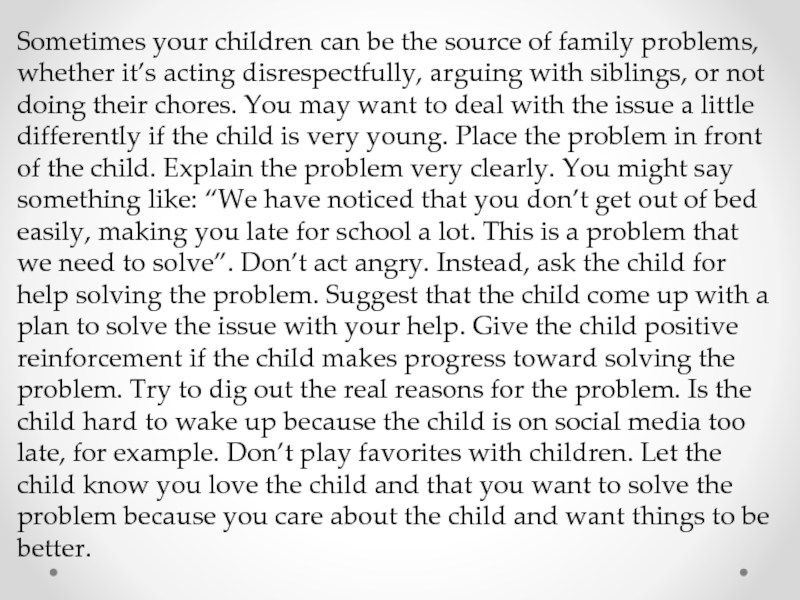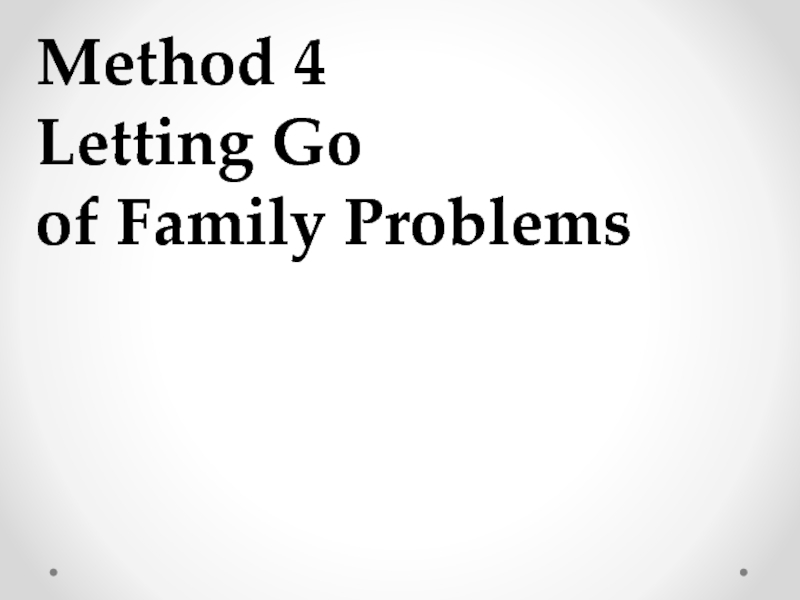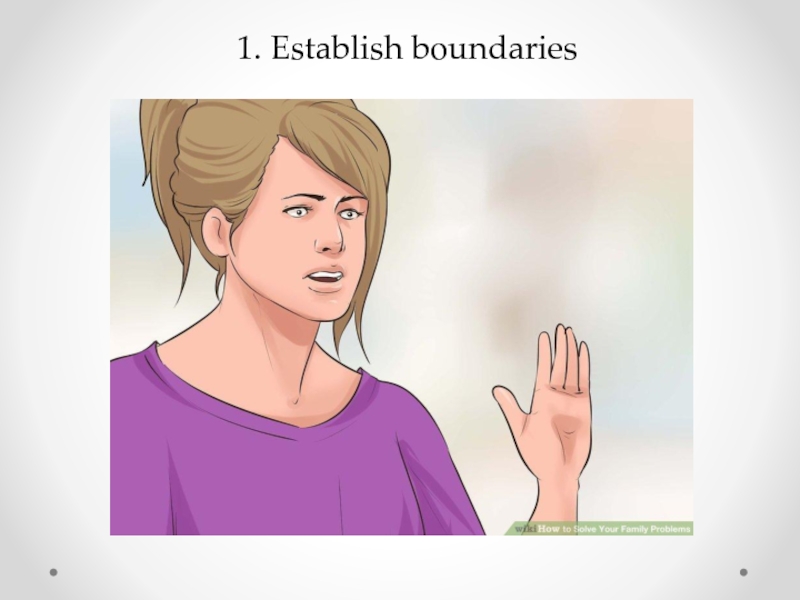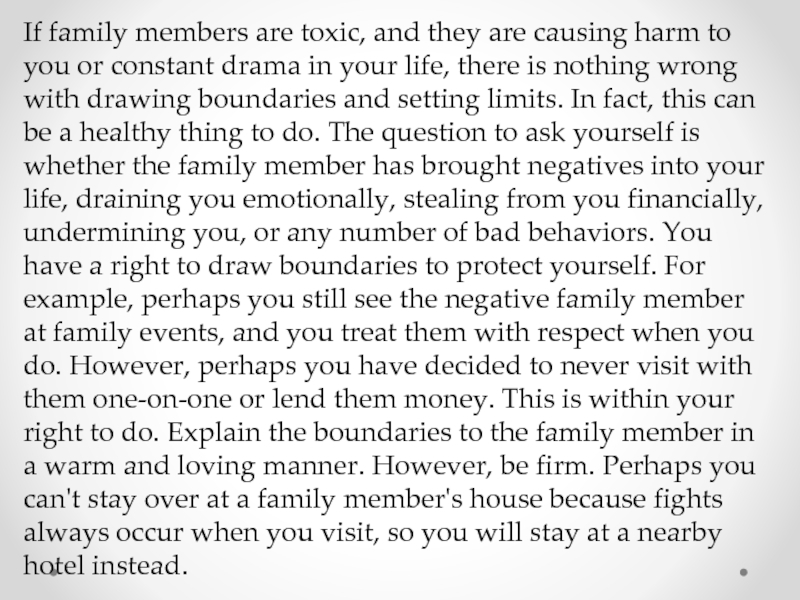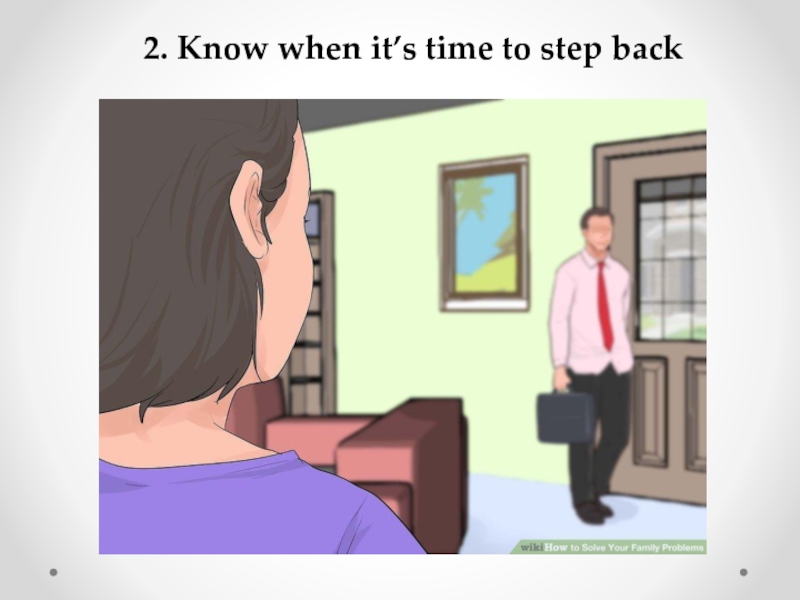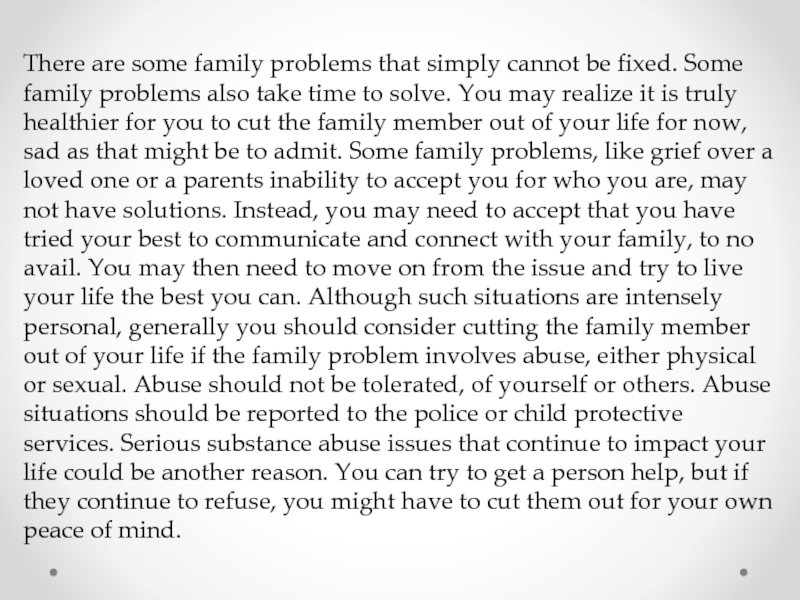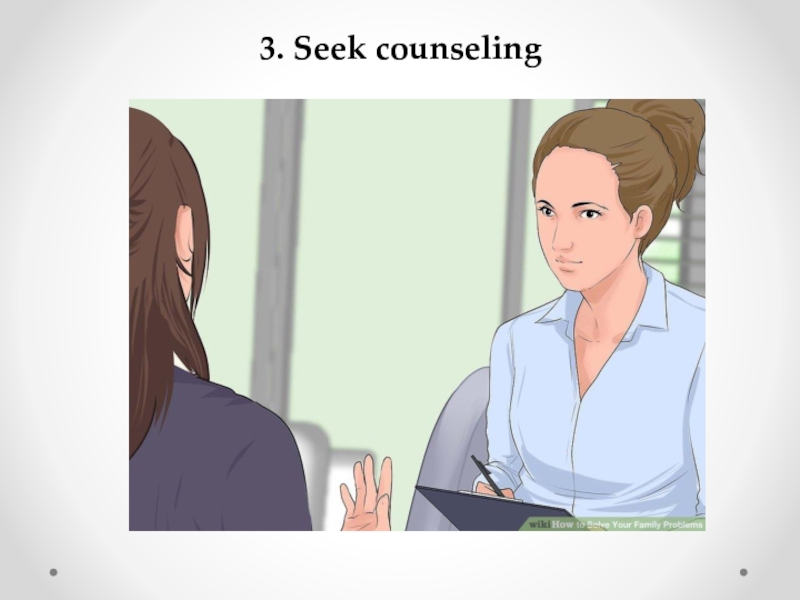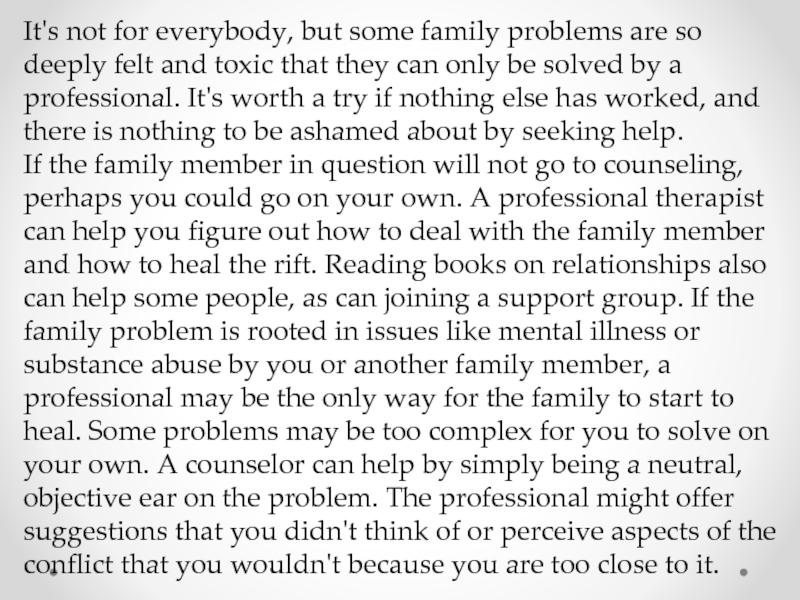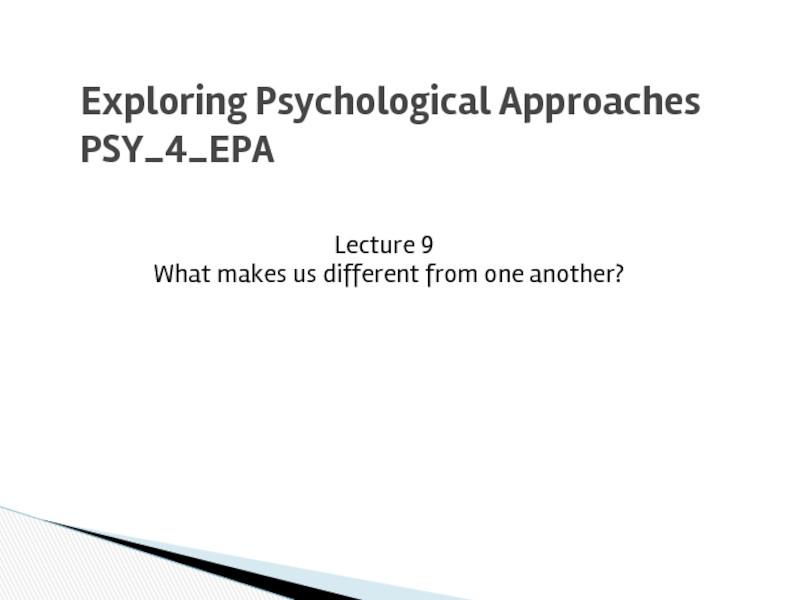- Главная
- Разное
- Дизайн
- Бизнес и предпринимательство
- Аналитика
- Образование
- Развлечения
- Красота и здоровье
- Финансы
- Государство
- Путешествия
- Спорт
- Недвижимость
- Армия
- Графика
- Культурология
- Еда и кулинария
- Лингвистика
- Английский язык
- Астрономия
- Алгебра
- Биология
- География
- Детские презентации
- Информатика
- История
- Литература
- Маркетинг
- Математика
- Медицина
- Менеджмент
- Музыка
- МХК
- Немецкий язык
- ОБЖ
- Обществознание
- Окружающий мир
- Педагогика
- Русский язык
- Технология
- Физика
- Философия
- Химия
- Шаблоны, картинки для презентаций
- Экология
- Экономика
- Юриспруденция
How to Solve Family Problems презентация
Содержание
- 1. How to Solve Family Problems
- 2. Most of us have been there. Families
- 3. Method 1 Beginning the Discussion
- 4. 1.Wait until you're not angry to discuss this problem
- 5. Family problems can be very painful, especially
- 6. 2. Deal with family problems in person
- 7. We've all been there; we've all sent
- 8. 3. Accept everyone’s faults, including your own
- 9. They say that blood is thicker than
- 10. 4. Avoid the blame game
- 11. Keep your language positive when you talk
- 12. 5. Forgive any family members that have wronged you
- 13. This can be a very difficult thing
- 14. Method 2 Getting at the Root of the Problem
- 15. 1. Identify the real problem
- 16. Try to figure out what is really
- 17. 2. Ask questions to draw out the family member
- 18. A good technique for digging out the
- 19. 3. Open a line of communication
- 20. Poor communication is involved in many, if
- 21. 4. Recognize when family problems need to be discussed
- 22. When has a family problem risen to
- 23. Method 3 Addressing the Family Problem
- 24. 1. Try to reach a compromise
- 25. Compromising means that you come up with
- 26. 2. Talk to family members one-on-one
- 27. There are some families that don't function
- 28. 3. Call a family council
- 29. Although a lot of disputes can be
- 30. 4. Write a letter to the family member
- 31. Although electronic communication often seems too terse
- 32. 5.Address a family problem with a child
- 33. Sometimes your children can be the source
- 34. Method 4 Letting Go of Family Problems
- 35. 1. Establish boundaries
- 36. If family members are toxic, and they
- 37. 2. Know when it’s time to step back
- 38. There are some family problems that simply
- 39. 3. Seek counseling
- 40. It's not for everybody, but some family
Слайд 2Most of us have been there. Families can be very difficult,
and family problems are very painful. However, there are ways to solve family problems and restore peace to the dynamic. Life is too short to waste time bogged down with negativity towards the people you love. How you approach the family member and what you say can make a big difference.
Слайд 5Family problems can be very painful, especially around family-centered times, like
holidays. If your family members are arguing, waiting until everyone is calm can help keep the argument from escalating into a full-blown feud. Don't discuss the family problem when you're still feeling upset or emotional. If you wait even a single night, the intensity of the emotion is likely to subside somewhat, even if you're still unhappy. Waiting allows you to approach the issue logically, rather than emotionally. If you take a step back and give yourself some time to think before dealing with the issue, you won’t deal with it so reactively. Approaching someone when you are angry will heighten the intensity around an already tough situation. There's no reason you can't wait to make your point tomorrow, so control your instant impulse.
Слайд 7We've all been there; we've all sent off a text or
email that we wish we could take back. Trying to address an argument or family problem by instant messenger or email is the worst possible choice. In-person discussions improve your ability, awareness and inclination to filter. That's because tone can too easily be misperceived by electronic communication. You might not think you sound angry, but you might sound angry by text to the person receiving it. Instead of sending off a text, pick up the telephone or, better yet, arrange an in-person meeting. Electronic communication means people lose the touchstones of body language, which can convey empathy and reduce the sting of a painful conversation. People say things by electronic communication that they would never say to another person's face, which is another reason to avoid it.
Слайд 9They say that blood is thicker than water, and that you
can choose your friends, but not your family. You might be able to cut people out, but it could cause you more pain down the road. Understanding that family members have faults, but you can still love them, is the first step toward addressing longstanding problems. Try to understand why they might act or think the way they do, as it can be a reflection of themselves rather than you. Accept your own faults, too. Accept blame when you deserve it. Try not to see family issues as all or nothing equations where someone is wrong and someone else (perhaps you) is right. Instead, try to perceive the gray areas. Nuances are exciting! It can do wonders to be the first person to apologize even if you really, truly, don’t think you did anything wrong. Say something like, “I can see you’re upset, and although this has been hard for me too, I am sorry. I really want to fix this, so let me know how I can do that.” That way if the family member continues the feud, at least you can say you took the high road.
Слайд 11Keep your language positive when you talk to your family. Avoid
using language that puts blame on any of your family members or that feels negative. Negativity is a vicious cycle. That means avoiding judgment words or name calling of the family member. It means avoiding accusatory words that are said in an angry tone. Blaming other people will make them defensive and prone to counter attacking, which will make the argument worse. Avoid the need to “win” the argument about the family problem. Instead, try to accept that there are two, or more, ways to see the point. Develop a plan for solving the problem together. Then, focus on organizing activities where you can have fun together, avoiding anything that could serve as a “trigger,” reigniting the problem. Explore new sides of your family members and new ways of relating to them. Keep your tone and voice calm and modulated, not raised and upset. Calmly and methodically explain your points, but with empathy for the other person. Always try to put yourself in the family member’s shoes. Make attempts to cool down the argument by throwing out conciliatory comments, like, “I see your point.”
Слайд 13This can be a very difficult thing to achieve. It is
very hard to forgive a person, family member or not, whom we think has wronged us. With family members, such feelings can run even deeper. However, ultimately forgiveness is about freeing yourself from the corrosive nature of the dispute. Forgiving the family member is about letting go of the past so you can build a healthier future that is free of tension and stress. Tell the family member you forgive him or her if the family member has readily admitted blame for whatever is causing the problem. Say this with empathy. It will go a long way. Remember that every human being is imperfect and needing of forgiveness at one time or another on life’s journey. That’s including you, probably, at some point.
Слайд 16Try to figure out what is really going on. Perhaps you
are struggling with health problems or personal problems that you have been hiding from your family. Or maybe you are all grieving over a loved one who has passed away. Consider the real issue at hand, as this will allow you to then better address it. You may need to engage in some self-analysis here. Why am I hiding my issue from my family? Why am I so upset at this family issue. For example, perhaps you are struggling with financial concerns over how your mother is spending her money. You may then realize that you are concerned because you do not want her to end up with no way to support herself financially, as you do not have the means to provide for her. Don’t assume what other people are thinking. You need to talk to them to find out what they are really thinking. Avoid gossiping about other people in the family as this will probably get back to them and make it worse. Focus on causes, not symptoms. However, a trusted family member, such as a parent or another sibling, might be able to help you figure out what is really going on, so it’s OK to talk to them in a way that is heartfelt and designed to solve or address the issue.
Слайд 18A good technique for digging out the root causes of family
problems is to ask questions rather than making statements. Statements can feel judging to people, putting them on the defensive. In contrast, asking questions softens the conversation and can draw out what's really bothering the person. Questions make the family member feel like he or she is not being condemned. Ask the other family member his or her ideas for making the situation better. For example, let's say that your sister has been really distant from you lately and not inviting you out for coffee like she used to. You could say: “I've noticed that we haven't seen each as much as we used to. Why do you think that is?” Or, you may try to address your mother's spending habits by saying: “I've noticed that you have been spending more money on clothing lately. Are you being responsible with money?” Make sure the questions are open-ended so that they provoke the other person to elaborate. Then, truly listen to what the family member has to say.
Слайд 20Poor communication is involved in many, if not most, family problems.
Shutting out the family member in question or shutting down can be a big problem. It’s hard to solve a family problem if you’re not talking. Be the person who reaches out first – no matter how hard that is. Perhaps an older, wiser family member can be asked to intervene and set up a meeting or talk to the other family member first, acting as sort of a mediator. In order to open the line of communication, you will have to set aside your pride. Remember it takes a big person to be the first person to tackle the problem. Ignoring the problem while it festers will probably only make it worse in the long run as the coldness grows between you. It’s better to express how you feel, but choose the right time and way to do so. For example, it may be a bad idea to bring up a family problem at the Thanksgiving dinner table. Avoid drinking before having a tough family conversation. Alcohol can fuel emotions in a lot of people, even when used in moderation, and that’s usually not the best thing when trying to have a difficult family conversation.
Слайд 22When has a family problem risen to the point that it
needs to be addressed? There are clear signs of family and relationship problems that have gotten out of control and need to be discussed, including frequent arguing, disagreements, angry outburst, avoidance of others, ostracizing of some family members and, in the worst cases, physical conflicts. Some family problems can be caused by differences of opinion, such as differing cultural values or beliefs. Parents and children may end up not being able to agree on lifestyle choices and personal preferences or beliefs. Other family problems stem from substance abuse, mental health problems, bullying, lack of trust, change in family circumstances, financial issues, stress, sexuality-related issues, and jealousy.
Слайд 25Compromising means that you come up with a solution that both
people can feel okay about even if neither gets exactly what he or she wants. A compromise is a good way to defuse a dispute or to address a family problem. The first step is trying to figure out whether the problem is solvable. That depends on the nature of the problem, and what’s already been done to solve it. If you’ve tried and tried and keep getting the same result, that may be different. But consider what points of common ground you have with the other person, and what points you would be willing to give in on. If you don’t give in on anything, you’re less likely to make headway in the dispute. One technique to develop compromise is for both people in the dispute to sit down and draw two circles that relate to the family problem. In the first circle, write down everything you’re not willing to compromise on. In the outer circle, write down the areas where you are willing to bend. Then, share the circles.
Слайд 27There are some families that don't function well as a group.
We've all been in dysfunctional groups where there's a negative dynamic at play. Sometimes, this comes out when everyone's together. Instead of broaching painful family problems at holiday gatherings or a big family dinner, try to figure out who the conflict is really between. If it's between you and one other family member, the rest of the family may feel very uncomfortable being dragged into it, because no one likes to be forced to take a side. Instead, ask the family member in question to meet you for lunch or coffee. Talking one-on-one in a neutral space can be a much better way to redress whatever grievances you have or they might have. People will say things individually that they would hesitate to say in a group. Don’t try talking to the family member when you’re distracted, working on a big work project, fielding a bunch of phone calls, doing the dishes, or the like. Instead, put everything down to focus on the issue and them.
Слайд 29Although a lot of disputes can be handled best one-on-one, there
can be times where you would want to get the entire family together to address a problem. This approach is best if the problem affects the entire family, rather than stemming from an interpersonal conflict with a few family members. For example, perhaps the family problem involves a job loss, disability, or money problems. Calling the family together to come up with ideas to solve the problem helps everyone feel like they are doing something useful. Use the family council as the foundation to develop a strategy to move the family forward in a positive manner. More minds are usually better at tackling a problem than one is. Make sure one family member doesn’t dominate the discussion, and explain that anger or name calling should be checked at the door.
Слайд 31Although electronic communication often seems too terse and impersonal, a heartfelt,
handwritten letter can go a long way when addressing tough situations. Handwriting is good because it's more personal. It shows that you put care and thought behind the letter, and it seems warmer. That will make the other family members realize that you are trying. Some people communicate better in writing but veil their thoughts and emotions more in person or on the phone. If you are one of those people, a letter might be the way to go. In the letter, you should explain how you feel and why you want to address the family issue. Use the word I more than the word you in the letter so you are stating your perspective and not blaming or speaking for anyone else. Explain how the problem is affecting you, but also explain how you would like the problem to be resolved and why.
Слайд 33Sometimes your children can be the source of family problems, whether
it’s acting disrespectfully, arguing with siblings, or not doing their chores. You may want to deal with the issue a little differently if the child is very young. Place the problem in front of the child. Explain the problem very clearly. You might say something like: “We have noticed that you don’t get out of bed easily, making you late for school a lot. This is a problem that we need to solve”. Don’t act angry. Instead, ask the child for help solving the problem. Suggest that the child come up with a plan to solve the issue with your help. Give the child positive reinforcement if the child makes progress toward solving the problem. Try to dig out the real reasons for the problem. Is the child hard to wake up because the child is on social media too late, for example. Don’t play favorites with children. Let the child know you love the child and that you want to solve the problem because you care about the child and want things to be better.
Слайд 36If family members are toxic, and they are causing harm to
you or constant drama in your life, there is nothing wrong with drawing boundaries and setting limits. In fact, this can be a healthy thing to do. The question to ask yourself is whether the family member has brought negatives into your life, draining you emotionally, stealing from you financially, undermining you, or any number of bad behaviors. You have a right to draw boundaries to protect yourself. For example, perhaps you still see the negative family member at family events, and you treat them with respect when you do. However, perhaps you have decided to never visit with them one-on-one or lend them money. This is within your right to do. Explain the boundaries to the family member in a warm and loving manner. However, be firm. Perhaps you can't stay over at a family member's house because fights always occur when you visit, so you will stay at a nearby hotel instead.
Слайд 38There are some family problems that simply cannot be fixed. Some
family problems also take time to solve. You may realize it is truly healthier for you to cut the family member out of your life for now, sad as that might be to admit. Some family problems, like grief over a loved one or a parents inability to accept you for who you are, may not have solutions. Instead, you may need to accept that you have tried your best to communicate and connect with your family, to no avail. You may then need to move on from the issue and try to live your life the best you can. Although such situations are intensely personal, generally you should consider cutting the family member out of your life if the family problem involves abuse, either physical or sexual. Abuse should not be tolerated, of yourself or others. Abuse situations should be reported to the police or child protective services. Serious substance abuse issues that continue to impact your life could be another reason. You can try to get a person help, but if they continue to refuse, you might have to cut them out for your own peace of mind.
Слайд 40It's not for everybody, but some family problems are so deeply
felt and toxic that they can only be solved by a professional. It's worth a try if nothing else has worked, and there is nothing to be ashamed about by seeking help.
If the family member in question will not go to counseling, perhaps you could go on your own. A professional therapist can help you figure out how to deal with the family member and how to heal the rift. Reading books on relationships also can help some people, as can joining a support group. If the family problem is rooted in issues like mental illness or substance abuse by you or another family member, a professional may be the only way for the family to start to heal. Some problems may be too complex for you to solve on your own. A counselor can help by simply being a neutral, objective ear on the problem. The professional might offer suggestions that you didn't think of or perceive aspects of the conflict that you wouldn't because you are too close to it.

